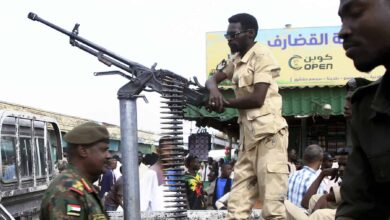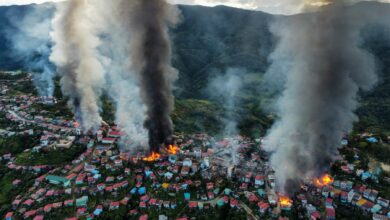Afghanistan civilian casualties from suicide bomb attacks surge by 46 percent
UNAMA report on the use of IEDs in Afghanistan says civilian casualties rose 21 percent
The number of Afghans killed or wounded in suicide attacks soared 46 percent in the first nine months of 2018, the United Nations said on Sunday, October 7, as militants increasingly target civilians.
Suicide bombs caused 2,343 civilian casualties including 714 deaths, more than any other tactic, including ground fighting, the U.N. Assistance Mission in Afghanistan said in a special report on the use of improvised explosive devices in the Afghan conflict.
Civilian casualties from all types of IEDs, including suicide bombs and pressure-plate mines, rose 21 percent from a year earlier to 3,634, including 1,065 deaths.
UNAMA warned the increasing number of “deliberate and indiscriminate attacks” against civilians constituted “serious violations of international humanitarian law” that could amount to war crimes and crimes against humanity.
“The unpredictable nature of these types of attacks, often away from the fighting and in civilian populated areas, has caused ordinary Afghans to live in fear of the next explosion, severely curtailing their ability to carry out normal lives,” UNAMA said.
Just over half of the civilian causalities caused by IEDs were attributed to Islamic State, while the Taliban, Afghanistan’s largest militant group, accounted for 40 percent.
Civilian casualties from IED attacks targeting civilians for which Islamic State Khorasan Province claimed responsibility rose by 223 percent on 2017, with 1,513 casualties including 443 deaths.
UNAMA noted 17 more incidents claimed by ISKP – 32 versus 15 – than during the same period in 2017.
There was also a three-fold increase in civilian casualties from IED attacks that were claimed by the Taliban. Seven attacks resulted in 415 civilian casualties including 152 deaths, the majority resulting from a suicide car bomb attack on a government compound in Kabul in January 2018, which caused nearly 350 casualties.
UNAMA attributed a total of 1,468 civilian casualties including 460 killed to the Taliban, in 302 separate incidents.
Attacks against Shia Muslims
Many of the attacks “appeared to be directed specifically” at Afghanistan’s minority Shiite community, most of whom are also ethnic Hazara, UNAMA said.
Sunni extremists consider Shiites apostates, and have carried out deadly attacks on the sect across the region.
In the first nine months of 2018, attacks targeting the Shia population caused 705 civilian casualties including 211 deaths. All but one were claimed by ISKP.
Other targets included sports stadiums, mosques, health clinics and voter registration centers.
The last major suicide attack was on October 2 at an election rally in the eastern province of Nangarhar that killed 13 people and wounded more than 40. ISKP claimed responsibility.
UNAMA is expected to release its overall civilian casualty report for the January-September period later this month.
Its first-half report released in July showed the number of civilians killed in the conflict at a record high of 1,692. Another 3,430 people were wounded.
With reporting from AFP











